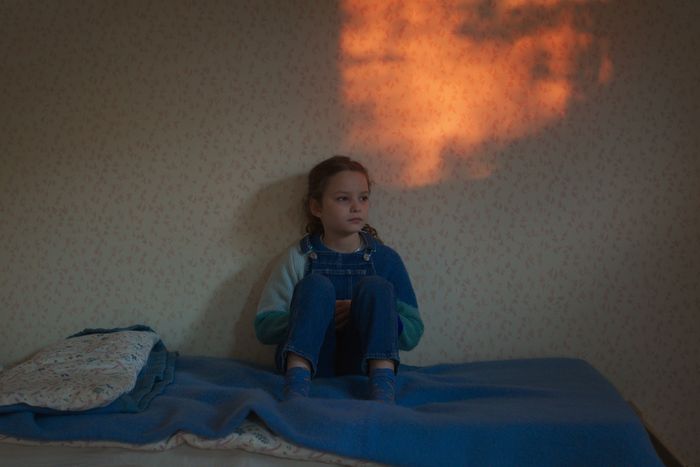petite maman (2022) a warm hug, chocolatey cacao & a defence on wide-angle emotional scenes
The marvellous thing about media workshop is the ability to force myself to sit down and
watch a film that has been on my watch list for some time, or to be greeted with a new film that I
haven’t heard of before, that I can sink my teeth into and expand my film literacy. On rare
occasion, I’m greeted with a situation such as this, the marvellous opportunity to rewatch a film
that I absolutely adore on the big screen with a live audience, although it is a different feeling to
silently sob around peers as opposed to violent weeping at home.
‘Petit Maman’ is a delicately captivating film, a cold comfort blanket of a child’s warm
hug when faced with the monotony of death. Perhaps as I’m well versed & fluent in Sciamma’s
visual language in this film, I never questioned the stylistic choices raised in class when
capturing emotion. Why she doesn’t cut tight for an emotive scene or why they don’t stage a
momentous lead-up to the child’s final goodbye; all assured choices. It takes only a watch of
Sciamma’s last shot of her previous opus, ‘Portrait of a lady on fire’ to show that Sciamma can
shoot a close-up, a four-minute one at that, and utilize it to wring out every ounce of rapturous
emotional outpouring capable for a person to contain. So this begs the question, why not in this
film?
I believe understanding these settings to be the key to the reasoning behind wide shots for
emotional scenes. When playing together, Nelly & Marion are in the beautifully crisp autumnal
air, surrounded by multitudes of oranges & yellows. It’s beautiful to look at, but intrinsically
linked to death; the impending winter. The milieu where the film spends most of its time and the
bulk of its emotional setting is the past & present of the grandmother’s house. Scant in both time
periods, the emotionality conveyed when shooting the young actresses in a wide is one of
wide-open dull anguish. Blank walls flanking a small child, trying to comprehend and work
through the intricacies of death can be shown as a visual allegory this way. Where to begin, what
to latch on to? It makes us, as onlookers, feel lost and caught in this vast plane of plainness. So,
as cliche as it sounds to be, cutting everything tight would be cutting out my favourite character
of the film, the settings.
thought of herself as a writer and critic before being pushed into the director’s chair. When
thinking of writing, it’s the holistic detailing that normally comes to mind; a three-act structure,
A plots, B plots and so on. Contrary to this, her films show great importance on the minutiae of
her characters, the small acts that one can forget are so important when writing. The way she
creates & captures sound and small mannerisms from characters is something that one would
think of visually, and hard to think of when putting black ink on white pages. Given the same
script written by Sciamma, and especially reinforced by the stylistic choices she made mentioned
above, I’m confident that no one could capture and realize it so beautifully as she did here.

Comments
Post a Comment